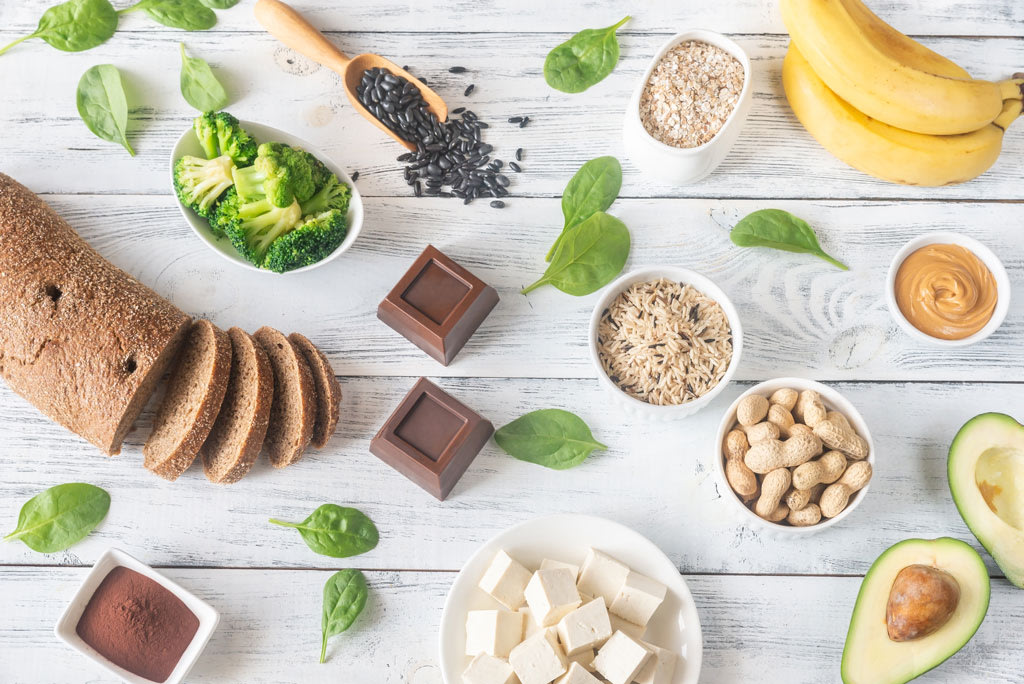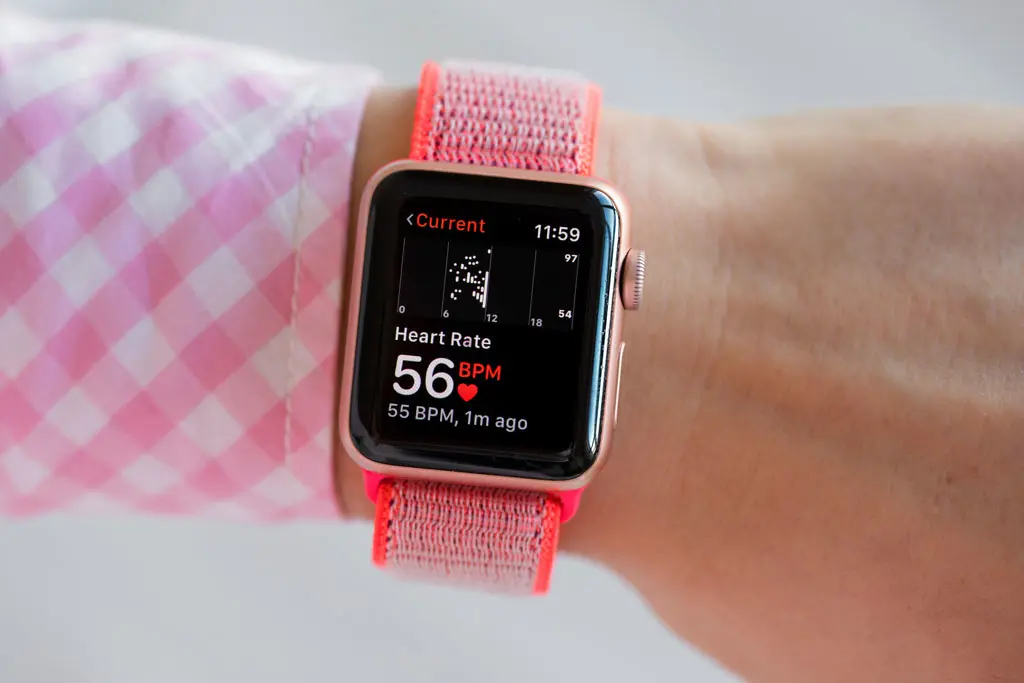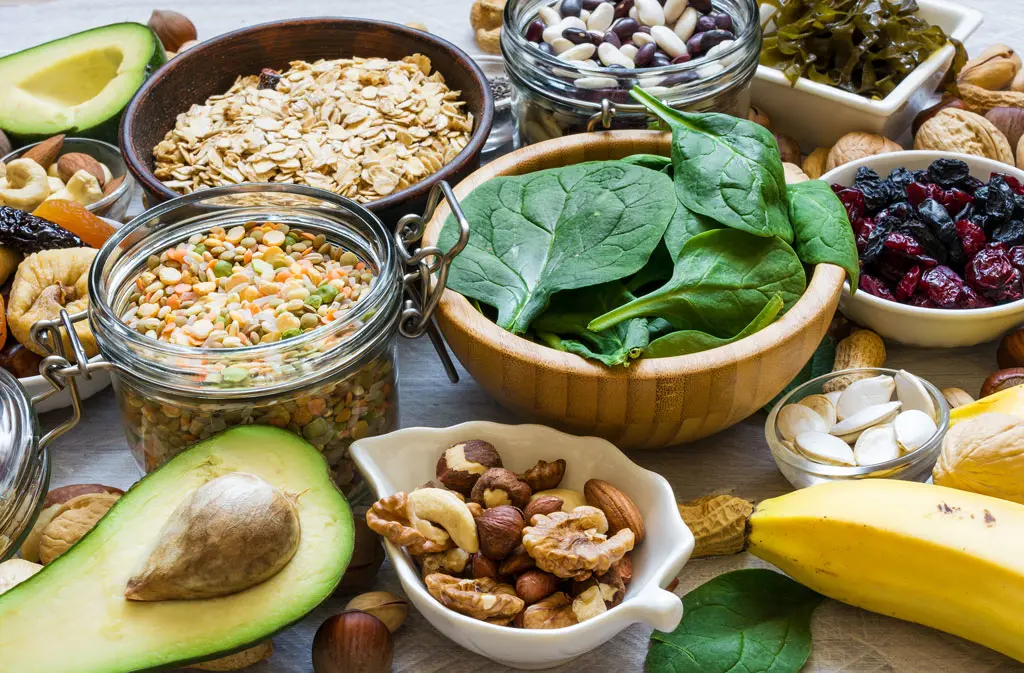Magnesium: How & Why To Get More In Your Diet

September 6, 2019

Some vitamins and minerals we know better than others. Calcium or vitamin C, for example, conjure up images of milk, cheese, yoghurt and oranges. One nutritious breakfast and you’ve almost ‘ticked off’ your calcium count for the day. But other essential vitamins and minerals, like magnesium, we’re not as familiar with.
Chances are, you’ve felt the effects of not getting enough magnesium, and probably attributed it to something else. If you’ve ever noticed muscle cramps - particularly leg cramps - after your workout or can’t figure out why you’re always tired, upping your magnesium could be the natural remedy.
Read on to learn more about how something as basic as getting enough magnesium can positively impact your workouts, energy levels, and overall happiness.
But first, what is this powerfully-natural mineral?
What is magnesium?
Magnesium is an essential mineral, naturally found in many foods. It’s one of seven, essential macro-minerals. You’ll also see it on dietary supplement shelves, to help support people who are low in it.
Why do you need magnesium?
We require magnesium for over 300 of the body’s important processes — including energy production, the synthesis of DNA, protein, and bone as well as nerve function, blood glucose control and muscle contraction.
Given its essential role in muscle contractions, magnesium is extra important for those of us who are physically active. This mineral is also known as a ‘natural muscle relaxant’, helping to soothe muscles. Magnesium works in harmony with other vitamins and minerals. It enables us to function in our everyday lives.
Consuming enough magnesium can also help with premenstrual symptoms — when your energy levels are at their worst.
This mineral also wards off long-term health issues, too.
From improving mental health to fighting chronic disease, a magnesium-rich diet can do the following:

Better bone and heart health
Magnesium promotes the absorption of calcium and activates vitamin D, which is essential for healthy bone growth. It's important to build healthy bones, especially as we age, as they provide strength, balance and reduce the risk of osteoporosis in women.
To keep the heart healthy, magnesium and calcium work together to support nerve signals and proper muscle contraction. Magnesium supports the transmission of electrical signals in the body and overall muscle performance. This helps to lower the risk of a fatty build-up on artery walls and fights high blood pressure.
Reduce diabetes risk
Magnesium serves important functions in carbohydrate and glucose metabolism — lowering the risk of diabetes. Not enough magnesium can lead to impaired insulin secretion and lower sensitivity.

Help headaches
Increasing your magnesium intake (instead of relying on pain killers) can prevent or relieve headaches.
Relieve anxiety
Mental health is a whole new discussion, however, it’s important to understand the implications that diet has on anxiety levels. Reducing your magnesium intake, or just changing the way it’s processed, may heighten anxiety. This is linked to activity in the hypothalamic-pituitary-adrenal (HPA) axis — three glands responsible for controlling our reactions to stress. The gut (our ‘second brain’) is important to mention, as a low-magnesium diet may impact the types of gut bacteria.
Magnesium also plays a part in healthy brain function, reducing the risk of depression and mental illness. It’s literally, great for the mind and body.
Signs of a magnesium deficiency
Many of the symptoms of magnesium deficiency can easily be attributed to something else. Experiencing headaches and general weakness? It might not be a migraine. Nausea and vomiting? No appetite? Shaking and muscle spasms? Excited, then sleepy? This could all be your body ‘telling you’ it needs more magnesium.
Severe instances of magnesium deficiency can lead to numbness, tingling, muscle cramps and more concerning, personality changes, osteoporosis, abnormal heart rhythms and seizures.
Keep an eye on your alcohol consumption, as this can lead to a magnesium deficiency. Had gastro before? This can lead to issues, as well as the use of some medications.
Educate yourself about the signs and symptoms of insulin resistance, metabolic syndrome, coronary heart disease and osteoporosis along with low calcium and potassium levels. This could be the cumulation of years living with a magnesium deficiency.

Recommended magnesium daily intake
Women require 310 – 320mg of magnesium per day. However, this number depends on age and stage of life. If you’re pregnant or breastfeeding, aim for 350 – 400mg. Men need slightly more, from 300 – 420mg every day.
You might be thinking, ‘this is great to know… but what does this mean in the context of food?’
The best food sources of magnesium
Soy latte, avocado toast, almond butter, smoothie, kind of girl? You’ll have no problems upping your magnesium intake. You can find this natural mineral in a wide range of foods — including green leafy vegetables, legumes, nuts, seeds and whole grains.
As a general rule, foods containing dietary fibre are great sources of magnesium. This mineral is often added to breakfast cereals and other fortified foods.

Foods high in magnesium
Almonds: One of the best sources of magnesium, almonds are perfect as an on-the-go snack or crunchy salad topper.
Spinach: Add a handful of spinach into your smoothie for a morning magnesium boost.
Cashews: An easy snack to keep in your handbag.
Peanut butter: Make your own for a healthier spin of this magnesium-rich treat.
Soy milk: Swap dairy milk for soy milk in your morning coffee for a great dose of magnesium, as well as protein and vitamins.
Black beans: Black beans are a delicious taco, burrito or salad filler. Legumes are a hearty ingredient, perfect for soups, dips, and salads. Low in fat and high in magnesium, legumes, such as chickpeas, are popular in vegetarian diets.
Edamame: When boiled or steamed, edamame is a healthy side dish. Add sesame oil and soy sauce for even more flavour.
Whole grain bread: Re-fuel your body after a workout with a high-protein breakfast of poached eggs on whole grain toast.
Avocado: For a boost of magnesium and healthy fats, swap poached eggs for smashed avocado on toast with sea salt and a squeeze of lime juice.
Oatmeal: Oatmeal is a quick and easy breakfast option that keeps you full for hours.
Broccoli: Steam a cup of broccoli and add it to your meal for a healthy serving of magnesium.
Prawns: Prawns or shrimps are delicious in a salad, with rice and greens or as a side dish, dipped in a sauce.
Brown rice: Switch your white rice for brown for a richer source of magnesium and more fibre.
Banana: Add it to a smoothie, a yoghurt bowl, slice it on a piece of toast with honey or on its own.
Tofu: You don’t need to be a vegetarian to enjoy tofu. Try adding it to a vegetable and noodle stir fry for a delicious meat-free dinner.
Salmon: Consume two to three servings of salmon a week to boost your magnesium intake along with protein and healthy fats. Salmon can make a great addition to any meal, whether it’s on rice cakes with cucumber for a quick snack, or in sushi at lunch.
Kale: Add this superfood to your smoothie, combine it in a salad or bake it in the oven to make healthy kale chips.
Dark chocolate: There are also some magnesium-rich foods that you might surprise you — like chocolate! Dark chocolate has many benefits and is packed with magnesium, as well as iron, copper and manganese. It contains prebiotic fibre that ‘feeds’ your healthy gut bacteria, while the antioxidants offer enriching properties, neutralising free radicals, the harmful molecules that are anti-ageing culprits.
Yes, eating dark chocolate can prevent cell damage and disease!
It’s also great for heart health, as it introduces flavanols, which are powerful antioxidant compounds that protect against LDL cholesterol (that also targets the cells). Choose a dark chocolate containing at least 70% cocoa solids (or more). With just 28g of this delightful snack, you’ll treat your body to 64mg of magnesium.
It’s not difficult to get the right amount of magnesium in your diet, thanks to these deliciously healthy foods. Fill your plate with these colourful foods and you’ll keep your body and mind healthy and happy.
Boost your health with magnesium
Magnesium is a mineral that’s crucial to literally hundreds of bodily functions. We need it to think, move, stay strong and thrive.
It’s necessary for your muscles and nerves to work properly, to maintain a healthy blood sugar and blood pressure, and to produce protein, bone and DNA — and it’s abundantly available in high fibre foods.
By consuming more magnesium, you have a lower risk of a heart attack, stroke and developing type 2 diabetes. You’ll have a higher bone mineral density, meaning you’re protecting your body against osteoporosis.
Eat consciously, with magnesium-rich foods in mind, and as always, listen to your body.

A more empowered you starts with Sweat, and our editorial team is here to bring you the latest fitness tips, trainer recommendations, wellbeing news, nutritional advice, nourishing recipes and free workouts.
* Disclaimer: This blog post is not intended to replace the advice of a medical professional. The above information should not be used to diagnose, treat, or prevent any disease or medical condition. Please consult your doctor before making any changes to your diet, sleep methods, daily activity, or fitness routine. Sweat assumes no responsibility for any personal injury or damage sustained by any recommendations, opinions, or advice given in this article.
Nutrition